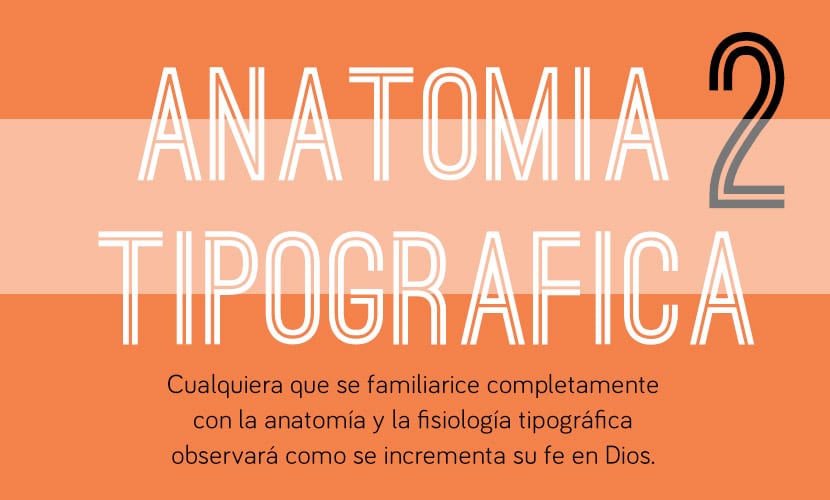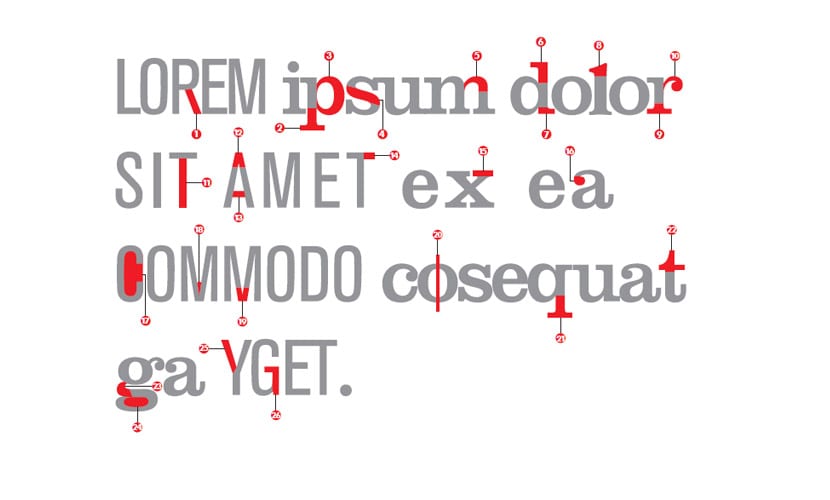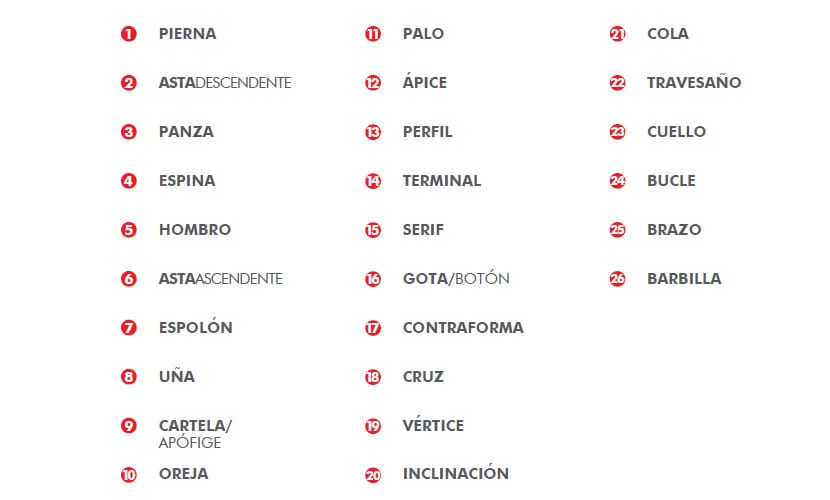
When we are truly professionals and we master our specialty, it shows. One of the traits that define a professional person is the language. A professional, cultured and knowledgeable person speaks with property and precision, knows the elements that make up their projects, their tools and their work systems. As graphic designers it is important that we dedicate part of our time as image professionals to investigate, read and dive through the terminological seas of our profession.
In the world of tripography there is a huge variety of terms, concepts and knowledge, those of you who have studied this know perfectly what I am talking about. For all those who are starting out in the world I have decided to gather a small classification of the components of a type, (I would recommend that you complement this with other readings). Still, you should know that there is no specific nomenclature and that it has been accepted in a definitive and universal way to designate the parts of a type. In each work and in the words of each author, the terms may change.


- Ascending pole: element of the letter that protrudes above the height "x", as in "b", "d" or "k".
- Cola: oblique flagpole hanging from some letters, as in R or K.
- Descending shaft: Flagpole of the letter that is below the baseline, as in "p" or "g".
- Ear: small terminal feature that is sometimes added to the ring of some letters, such as g or o, or to the shaft of others such as r.
- Serif: terminal trace of an antler, arm or tail. It is an ornamental highlight that is not essential for the definition of the character, as there are alphabets that lack them (sans serif).
- Counterform: A curved shaft resting on the baseline at R and K, or below it, at Q. At R and K it can simply be called a tail.
- Leg: Main feature of the letter that defines its essential form. Without her, letter would not exist.
- Apex: Union of two antlers at the top of the letter.
- Belly: Curved line that encloses the internal target in letters such as "b", "p" or "o".
- Shoulder: Curved line that leaves the main shaft of some letters without ending up closing.
- Crossbar: Horizontal line that crosses some point on the main pole.